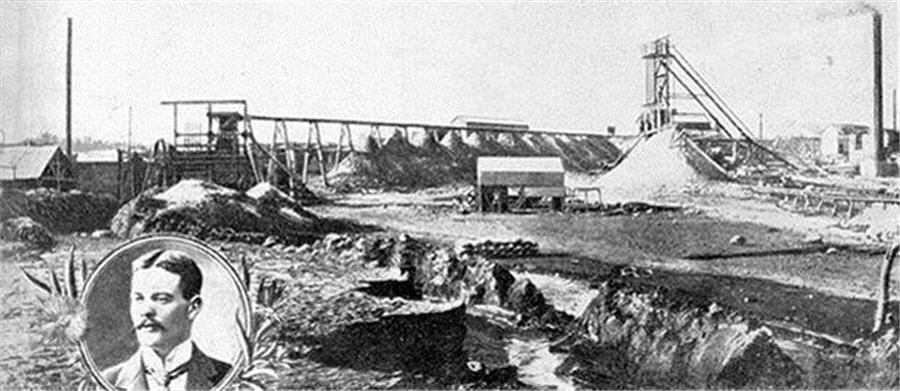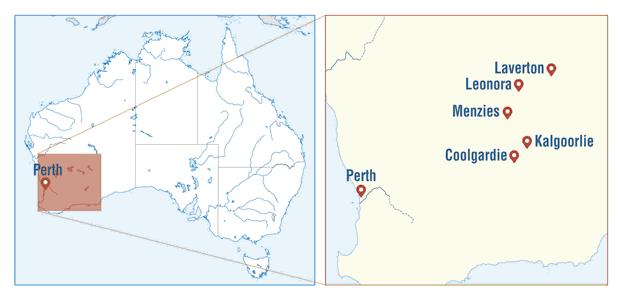Australian gold mining’s Fifth Avenue.

Between the early 1890s and early 1900s, Western Australia was in the grip of a gold rush, centred on the Kalgoorlie-Laverton-Leonora region.
By 1900, the miners’ institute at Bulong (east of Kalgoorlie) “had a grand piano imported from Europe. Menzies had a post office employing 30 people and Coolgardie had as many daily newspapers as Melbourne … when electric trams were novelties in Australian cities, they ran between the twin outback towns of Leonora and Gwalia and the twin cities of Kalgoorlie and Boulder” (Geoffrey Blainey, The Rush that Never Ended, page 194).

Today, with the gold-mining sector in good financial shape, some historic mines in the region are being revived or expanded.
Mount Morgans is an example. It was the first major mine in the Laverton region, starting in the 1890s. Mining continued for several decades before ceasing and then being revived intermittently in the second half of the 20th century.
The company, Dacian Gold, purchased Mount Morgans in 2012 and is to reopen it. Construction at the A$160-million project is scheduled to commence by mid-2017, with first production by mid-2018. Mining will be open cut and underground. Total gold production over seven years will exceed 1 million ounces.
Sons of Gwalia near Leonora is a further example. It also started in the 1890s. As tourists to the area are quickly told, a young American mining engineer, Herbert Hoover, was the mine manager in 1898, later becoming US president (1929-1933).
Mining ceased in 1963. It was revived in the 1980s, but the company involved collapsed in 2004. It was purchased by the company, St Barbara, which re-opened it in 2008.
At 1,500 metres, Sons of Gwalia is one of the deepest underground mines in Australia. St Barbara plans to extend it to at least 1,800 metres, with options that include extending the main decline (the Hoover decline) or installing a haulage shaft. Production this year will be over 250,000 ounces.
Apart from Dacian Gold and St Barbara, gold producers in Australia enjoying the current strength of the sector include major international companies (e.g. Newmont Mining, AngloGold Ashanti, Gold Fields, Newcrest Mining), an emerging group of mid-tier companies (e.g. Northern Star Resources, Evolution Mining, Regis Resources) and a growing number of small companies.
In 2015, Australia was the world’s second-largest gold producer, after China. Western Australia is responsible for two-thirds of Australia’s production.
{{ commodity.name }}
{{ post.title }}
{{ post.date }}




Comments